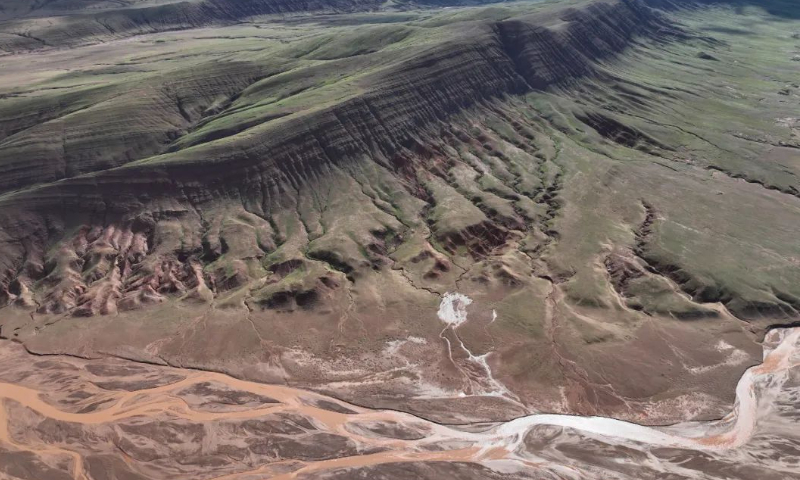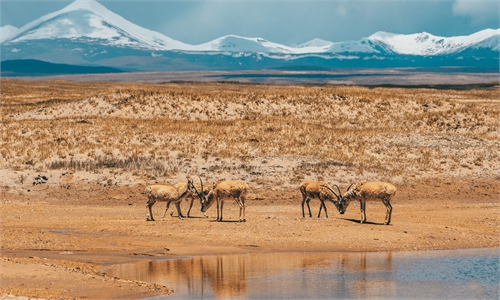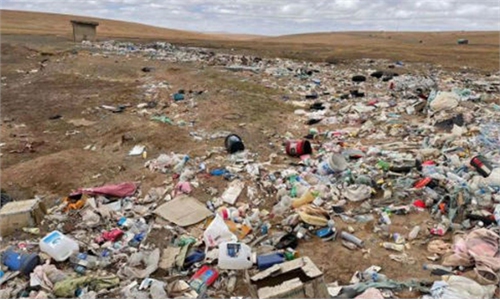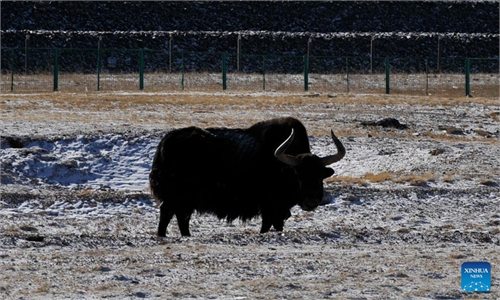
Red strata discovered in Hoh Xil, Northwest China's Qinghai Province Photo: Xinhua
A Chinese expedition recently discovered a large "red mountain" in Hoh Xil, Northwest China's Qinghai Province, which could be dated back to the late Cretaceous or Paleogene period between 70 and 30 million years ago.
"It is rare to find such large, exposed area of red strata in China," said Shen Tianyi, associate professor at the School of Earth Sciences of the China University of Geosciences in Wuhan and one of the members of the expedition, hailing it as a "spectacular ancient geological relic" on the Qinghai-Xizang Plateau.
Sitting in the middle of Hoh Xil, the mahogany colored mountain is very noticeable in the green grassland of the basin in summer, with clear and overlapping stratum visibly exposed.
The mountain located in an east-to-west axis has clear stratigraphic sections and asymmetric slopes, steep in the south and slow in the north. Some 160 kilometers from north to south and nearly 600 kilometers from east to west of the stratums are naturally exposed.
The geological landscape of the "red mountain" in Hoh Xil is expected to be developed into a large geopark, the expedition team mentioned. Located on the Qinghai-Xizang Plateau, Hoh Xil is the largest uninhabited area in China.
The mountain contains rich geological formations closely related to the uplift process of the Qinghai-Xizang Plateau which provide important support for in-depth research on the evolution of the plateau.
Shen said the "red mountain" in Hoh Xil was mainly formed during the late Cretaceous or early Paleogene period, between 70 and 30 million years ago.
The "red mountains" were previously brick-red rocks in the Tanggula Mountain. After continuous weathering and denudation, those rocks were transported by rivers, deposited in the Hoh Xil basin and later exposed to the ground after geological tectonic movements, Shen said.
The team from the China University of Geosciences in Wuhan is now on a scientific expedition at the source of the Yangtze River in Hoh Xil.



